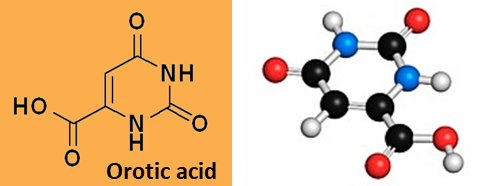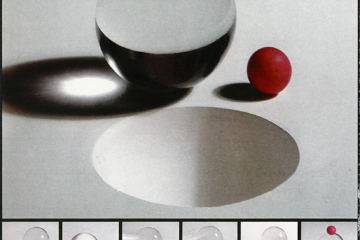The dietary supplement Ultra-Flore was used to combat digestive troubles, essentially diarrhea in adults, children and babies. The drug contained two complementary active substances types. On the one hand, the yeast strain Saccharomyces cerevisiae helped to limit the expansion of pathogenic bacterial strains (such as Staphylococcus and Candida albicans). On the other hand, the synthetic small molecule orotic acid promoted the growth of useful bacteria, in particular Lactobacillus, Enterococcus, and Escherichia coli. The combination of the two active principles, orotic acid and highly active yeasts, proved efficient to boost growth of the beneficial digestive flora while reducing growth of pathogenic bacteria. The drug advertisement illustrated clearly this double action.
Orotic acid (vitamin B13) is a pyrimidine-type nucleotide analogous to uracil. It is an intermediate metabolite of pyrimidine nucleotide biosynthesis and represents a minor diet constituent. It can be found in milk and in diverse biological fluids such as human ovarian follicular fluid. Its anionic form, orotate, plays a pivotal role in various biological processes, serving as a key intermediate in pyrimidine de novo synthesis. Orotic acid is largely used in healthcare and cosmetic industries. In cosmetics, the product is used to support skin regeneration and enhance skin texture. It contributes to skin repair and conditioning. Ultra-Flore® per se is no longer commercialized today but there are several equivalent products available.
x


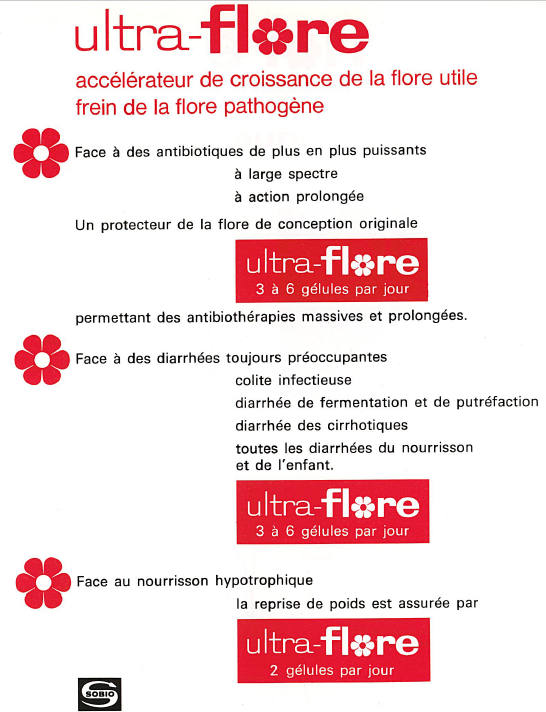
x
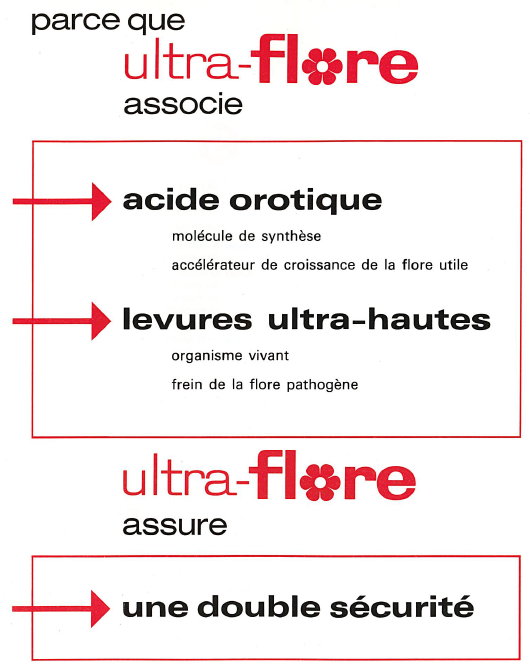

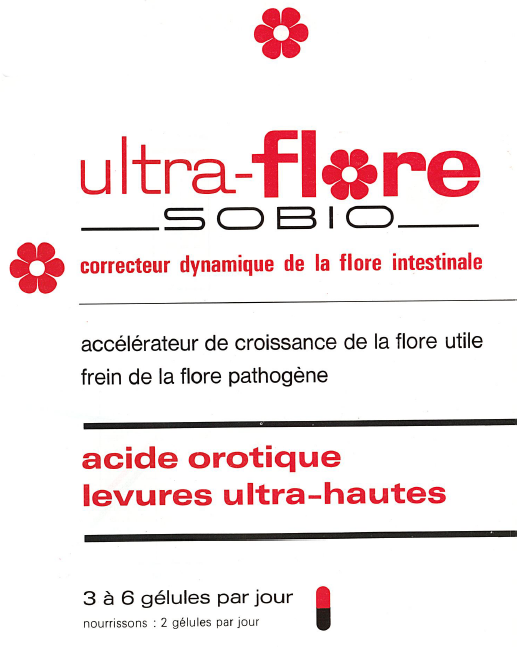
x


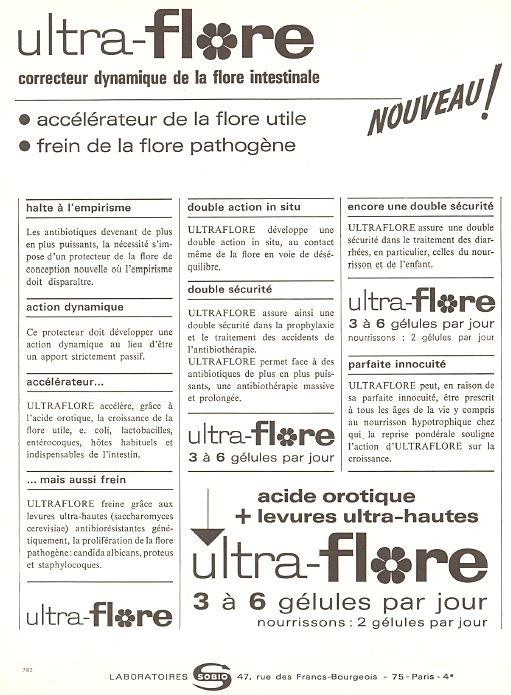
x
